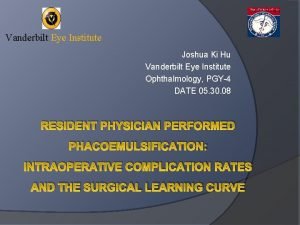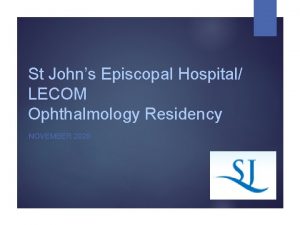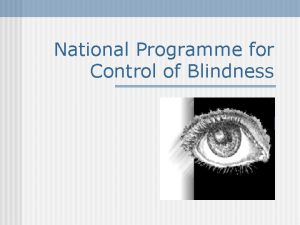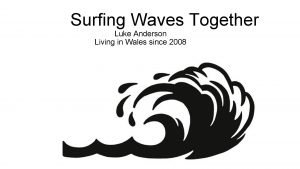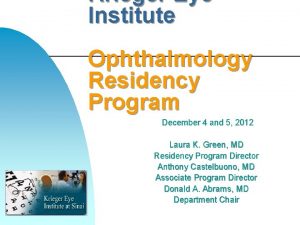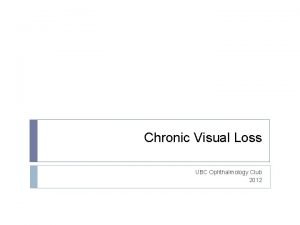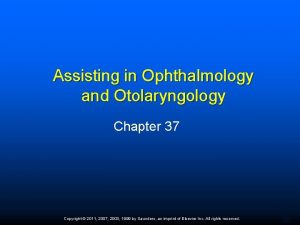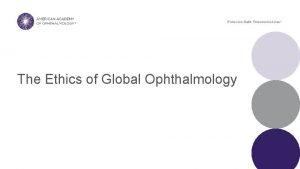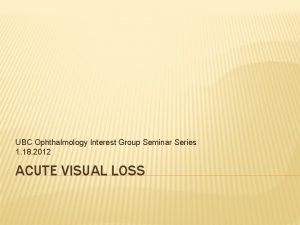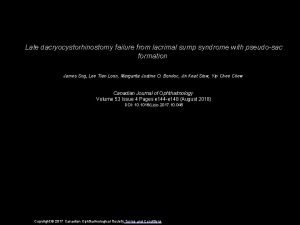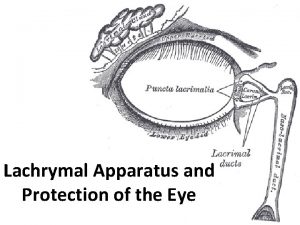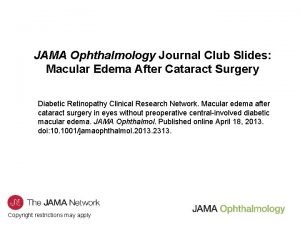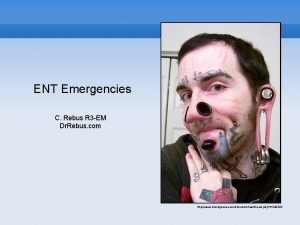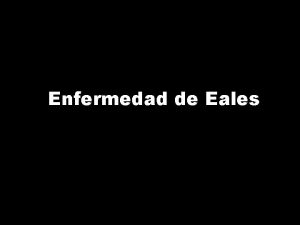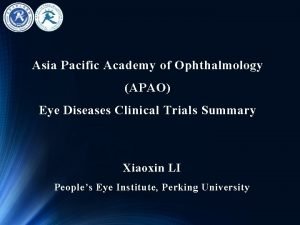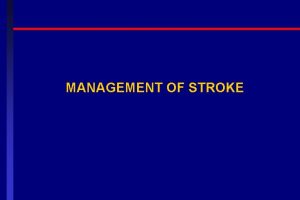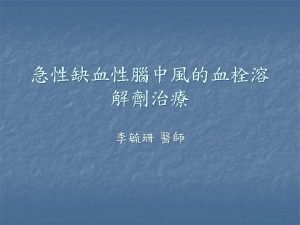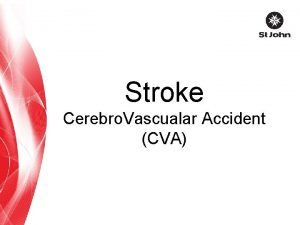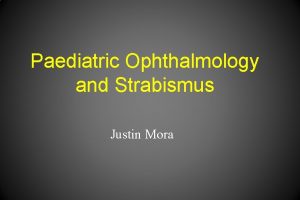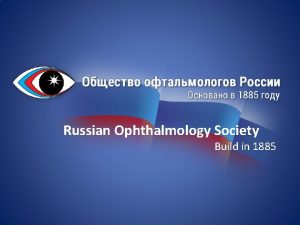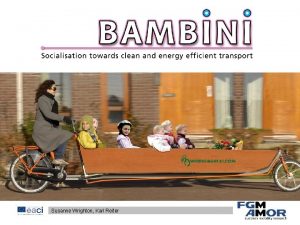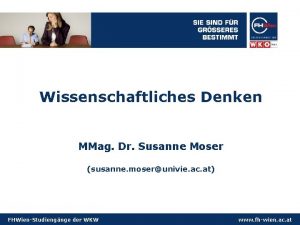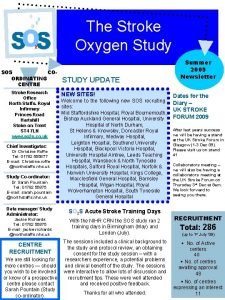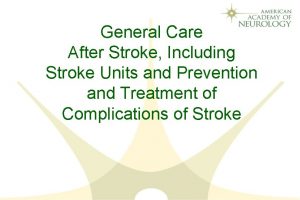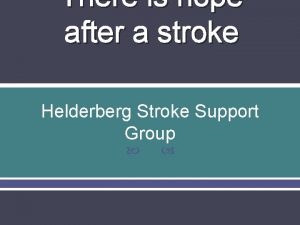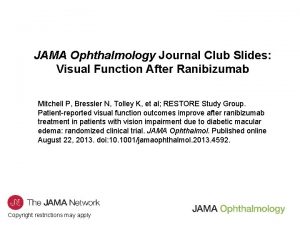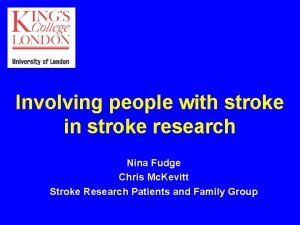TRAINING AFTER STROKE Susanne TrauzettelKlosinski Centre for Ophthalmology























- Slides: 23

TRAINING AFTER STROKE Susanne Trauzettel-Klosinski Centre for Ophthalmology, University of Tübingen, Germany

Hemianopia: main activity limitations and participation restrictions § Orientation disorder - bumping into objects or persons - problems with wayfinding - impaired communication § Reading disorder if the field defect involves the centre § Resulting in - Reduced participation in the society - Severe reduction of quality of life!

The hemianopic orientation disorder

General aspects of rehabilitation Three main aspects need to be considered: § Optical devices § Spontaneous adaptive strategies their knowledge and potential utilization § Training

Spontaneous adaptive strategies § Are they helpful? § Which patients do develop them, which don`t ? § Can they be trained?

Spontaneous adaptive strategies § Eye movements towards the blind side - small during fixation tasks - larger during exploration tasks: allow a better use of the field of gaze § Attentional shift towards the blind side § Head turn - unfavorable

Can these spontaneous adaptive strategies be used for training?

Training

General aspects of training studies § specifity: § exclude spontaneous recovery § exclude placebo effects by using a control group § reliability: § assess the potential success by suitable methods § aim: § which improvement is clinically relevant? § can the newly learnt ability be applied to everyday life? § does the effect persist after training?

Note the difference: § Visual Field: seen area during straight viewing direction – without eye movements § Field of Gaze: Seen area WITH eye movements

As it had turned out that § § methods to restitute the visual field did not produce the desired results and methods to compensate by eye movements were not yet verified by control groups We performed the following study: Comparing explorative saccade and flicker training in hemianopia: A randomized and controlled study Roth T, Sokolov AN, Messias A, Roth P, Weller M, Trauzettel-Klosinski S Neurology 2009; 72: 324 -331 This was the first randomized controlled study

Explorative saccade training EST: Digit search task

Summarized Results: Saccadic Training Study Explorative Saccadic Training EST § selectively improves saccadic behaviour, natural search and natural scene exploration § The new saccadic strategy can be applied to everyday life § The training effect remained stable after end of training § Even patients with long-standing hemianopia improved § Quality of life in social domain improved Flicker stimulation training FT (control group) § Did not change visual fields § Exploration was unchanged Roth et al, Neurology 2009

Conclusions: Saccadic Training Study Compensational approach: Explorative Saccadic Training EST § is specific to improve utilization of the field of gaze § is evidence-based and recommendable § The training developed and used in this study is available as software § Compared to other saccadic training methods, which use mostly oculomotor training or single target search tasks, the training of this study has special features: - multiple target search task (relevant for everyday demands) - diagnosis specific (hemianopia, quadrantanopia) - easy to use, also for patients without prior PC experience - independent training at home - low costs

Further developments since 2009 Personal Version for Patients § Available as software § To use independently at home with USB-Stick § 3 levels of difficulty § Feedback for the patient during the training Professional Version – additional options § Patient data bank § Several patients trainable simultaneously or successively § Import of external data (from patient`s USB-stick) § Network-compatible Areas of application Rehab-Units, private practice and at home Available in 17 languages

Saccadic Training for Hemianopia Developed at the Low Vision Clinic Center for Ophthalmology University of Tuebingen, Germany Available in 17 languages – also in Danish and Swedish Thanks to the colleagues from all over the world for the translations! Further information: See www. visiocoach. de Distributed in Scandinavia by Indenova VISIOcoach®

Reading performance in hemianopia depends on: § the side of the field defect (reading direction) § its distance to the midline (size of reading visual field) § presence or absence of adaptive strategies, such as § eccentric fixation § predictive saccades

Reading training in hemianopia § Can adaptive strategies be trained? § How can eye movement strategies overcome the sensory deficit?

Approaches to improve reading in hemianopia § Support for orientation on the page: visual and tactile aids (index finger, ruler or slightly magnifying ruler with red guide-line) § Predictive saccades to the beginning of the next line § Turn text in vertical or diagonal orientation § Computer training with scrolled text (Zihl et al 1984, Kerkhoff et al 1992, Spitzyna et al 2007) The only randomized and controlled reading training study in right hemianopia reported an improvement of reading speed. (Spitzyna et al Neurology 2007: 68)

How to measure reading speed? Standardized assessment is necessary!

International Reading Speed Texts IRes. T § Paragraphs of text (approx. 130 words per text) More accurate than single sentences, size of newspaper print, considering the everyday-demand § Standardized: Same length, difficulty, content and linguistic characteristics in the different languages § Set of 10 equvalent texts in each language for repeated measurements and international studies § Now available in 17 languages Hahn et al , BJO 2006 Trauzettel-Klosinski S, Dietz K and the IRe. ST Study Group (2012) IOVS 53: 5452 -5461

International Reading Speed Texts IRe. ST The tool for an evidence-based procedure! • reproducibility • comparability • success documentation The tool for international multilanguage reading studies! The 2 nd edition with 17 languages is now available Further information see www. amd-read. net and Flyer

Final summary: Evidence-based training methods for hemianopia For reading § in right hemianopia: scrolled text § further studies are desirable For orientation § Explorative saccadic training
 Anterior stroke vs posterior stroke
Anterior stroke vs posterior stroke After me after me after me
After me after me after me If any man desires to come after me
If any man desires to come after me Stroke rehabilitation centre singapore
Stroke rehabilitation centre singapore Statics
Statics Slidetodoc.com
Slidetodoc.com Vanderbilt ophthalmology residency
Vanderbilt ophthalmology residency St john's hospital
St john's hospital National tb control program
National tb control program Thym adren
Thym adren Luke anderson ophthalmology
Luke anderson ophthalmology Krieger eye
Krieger eye Ubc ophthalmology
Ubc ophthalmology Chapter 31 ophthalmology and otolaryngology
Chapter 31 ophthalmology and otolaryngology Ophthalmology code of ethics
Ophthalmology code of ethics Ophthalmology
Ophthalmology Ubc ophthalmology
Ubc ophthalmology Miosis
Miosis Sump syndrome
Sump syndrome Veterinary ophthalmology
Veterinary ophthalmology Jama ophthalmology impact factor
Jama ophthalmology impact factor R3em
R3em Sindrome de eales
Sindrome de eales Asia-pacific academy of ophthalmology
Asia-pacific academy of ophthalmology






